(206) 258-6676
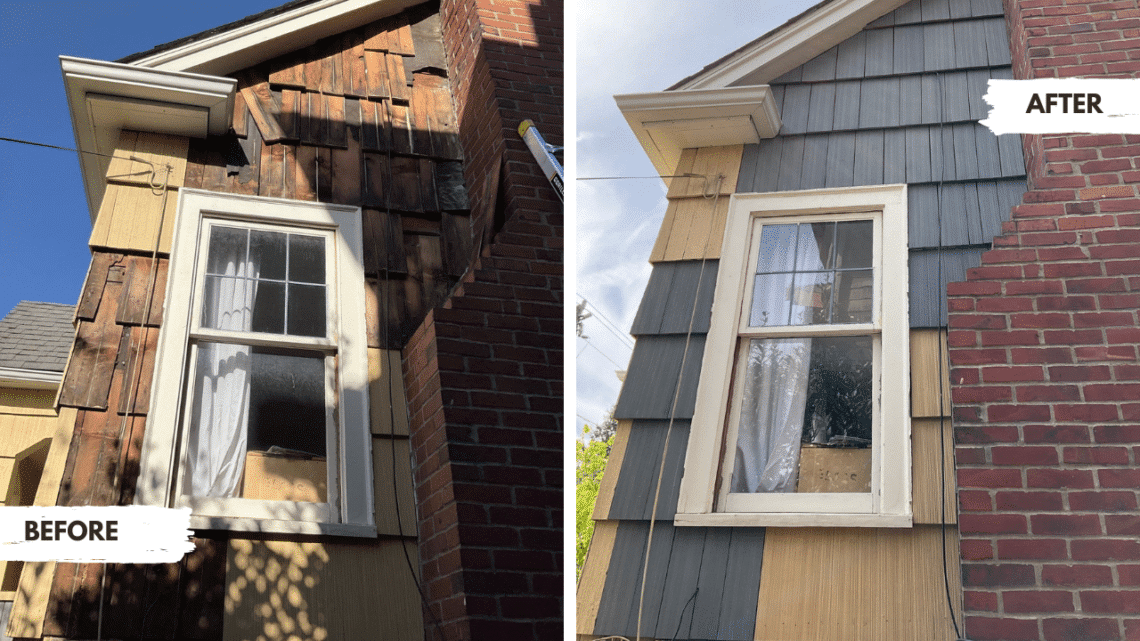
Preventing Wood Rot in Seattle
Seattle’s weather poses a significant challenge to homeowners looking to maintain their wooden structures. We see homes every day that are ridden with wood rot, and it’s every homeowners nightmare. Whether it’s siding, decks, trim, or other wooden features, the threat of wood rot looms large in the Pacific Northwest. However, with proactive measures and an understanding of the local climate, you can effectively protect your wood from deterioration and prolong its lifespan.
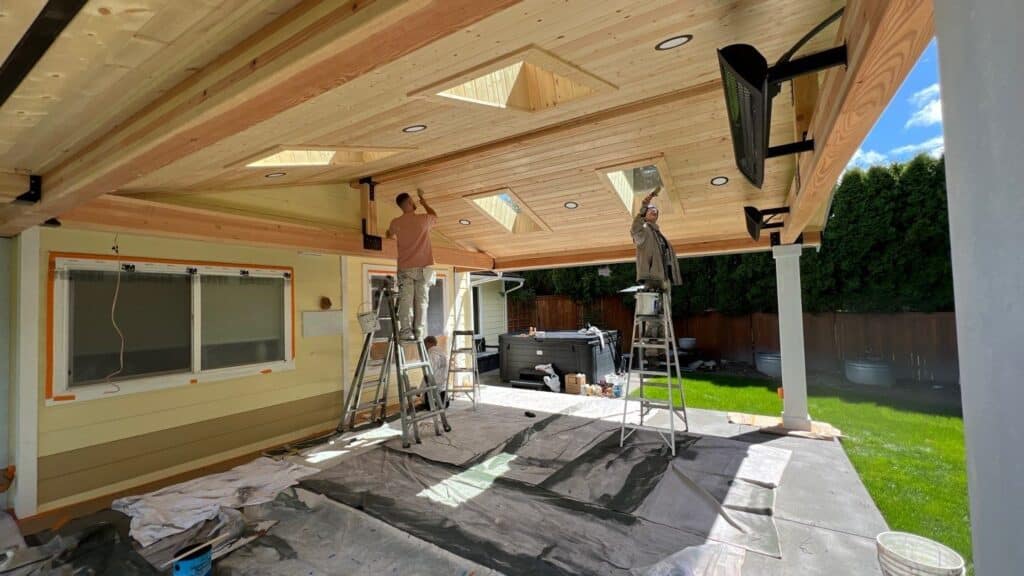
Understanding Seattle’s Climate
Seattle’s climate is classified as temperate oceanic, characterized by mild, wet winters and cool, dry summers. The city receives a substantial amount of rainfall, particularly from November to February, with overcast skies being a common sight. This combination of moisture and relatively moderate temperatures creates ideal conditions for wood rot to thrive. There are not many days in the winter when it’s dry enough for your wet wood to breath. That makes it so that it’s extremely important for homeowners to be proactive in Seattle.
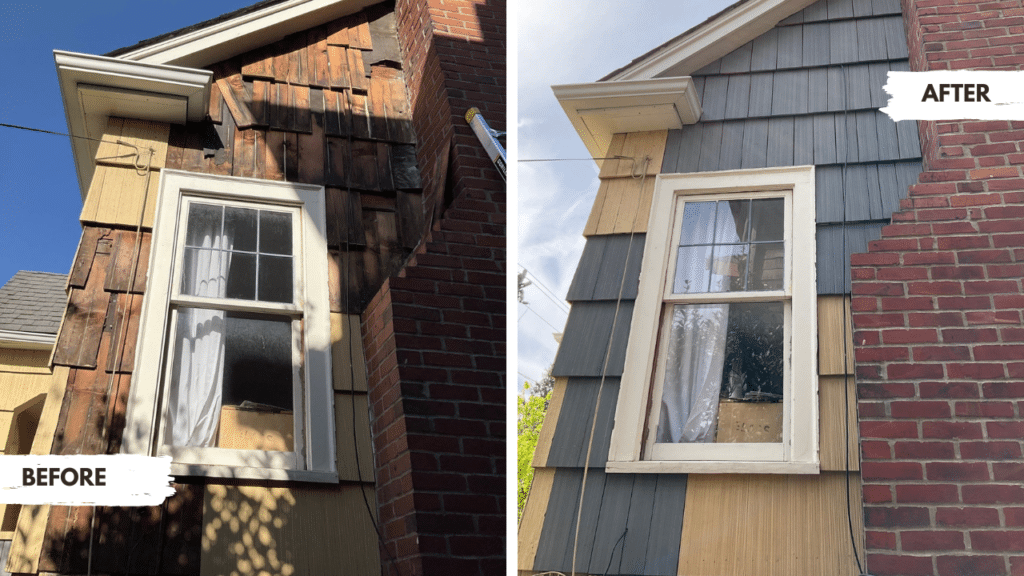
Materials Matter
When building or renovating, opt for wood species that are naturally resistant to rot. Not all wood contains oils that help them to deter water damage and stay dry. While not all wood comes naturally resistant to water, many different types of lumber are treated to be water resistant. Check out the following list of lumber options to help you decide what materials you will use for your project.
- Oak – A hardwood known for its resilience against water and rot, making it a top choice for outdoor projects like decking and furniture. Its high tannin content acts as a natural shield against moisture damage and decay. This ensures longevity and durability even under heavy use.
- Douglas Fir – A robust softwood native to North America, celebrated for its strength and resistance to water and rot. Its natural resins provide protection against moisture damage and decay, making it an ideal choice for outdoor construction like decking and framing. Easy to work with and adaptable, it offers longevity and structural reliability.
- Cedar – A lightweight softwood native to North America’s western regions, prized for its natural resistance to water and rot. With its aromatic oils and resins, it withstands moisture and fungal decay, making it perfect for outdoor applications such as siding and fencing. Its ease of workability and insulating properties further enhance its appeal.
- Iroko – A tropical hardwood hailed as the “African teak” for its resemblance and resilience. With natural oils and resins, it wards off moisture and insects, standing strong against rot. Its golden-brown hue with dark streaks adds character. Its durability makes it perfect for outdoor endeavors like decking, furniture, and boat construction.
Proper Installation With a Wet Climate in Mind
Siding serves as the first line of defense against the elements. It’s important to make sure that your siding is installed properly to avoid water damage expanding further into your home. Regularly inspect your siding for signs of damage or wear. This is important especially in areas prone to moisture accumulation, such as corners and joints. If you notice any damage or rot, it’s important to replace these areas as soon as possible.
Proper Drainage – Effective drainage is essential for preventing water from pooling around your home’s foundation, which can lead to wood rot in siding and trim. Keep gutters and downspouts clear of debris to ensure proper water flow away from the house. Consider installing French drains or grading the landscape away from the foundation to redirect water.
Ventilation and Air Circulation: Proper ventilation is vital for reducing moisture buildup within your home’s walls and crawl spaces. Ensure attic vents are unobstructed to allow for adequate air circulation, reducing the risk of condensation and mold growth. Consider installing a vapor barrier in crawl spaces to further protect against moisture intrusion.
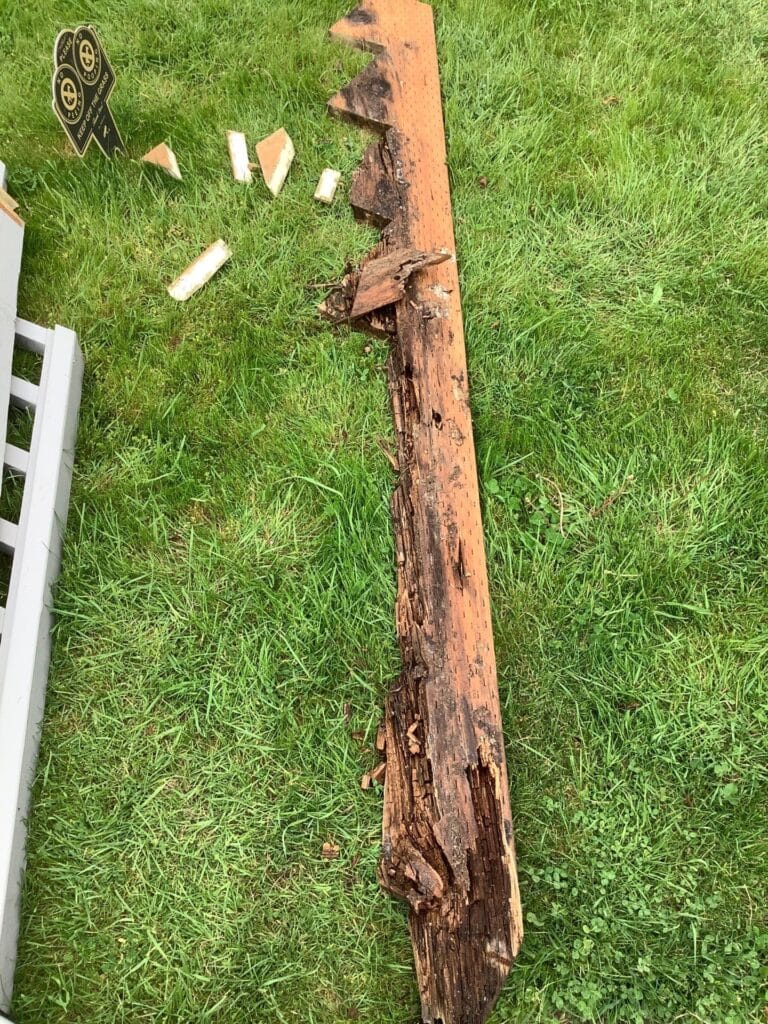
Preventing Wood Rot
Prevention is key when it comes to combating wood rot. Take the time for regular inspections of your home’s exterior, paying close attention to areas prone to moisture exposure. This can be done on your own by walking around the exterior of your home and looking for signs of rot or decay.
When it comes to identifying rot or decay, common signs include soft or spongy wood, discoloration, and a musty odor. It can be more difficult to notice these areas if you have a multiple story home, so try taking some photos of your siding and saving them in a place that you can refer back on a yearly basis. Pay close attention to areas prone to moisture exposure, such as around windows, doors, and decks.
Trim and fascia boards are often overlooked but are crucial components in protecting your home from moisture intrusion. Keep them well-maintained by regularly painting or staining to provide a protective barrier. Ensure proper ventilation to prevent moisture buildup behind these structures, which can accelerate decay.
Decks are particularly susceptible to wood rot, given their constant exposure to moisture and foot traffic. Regularly clean your deck to remove debris and prevent mold and mildew growth. This is especially important in the Pacific Northwest due to the wet climate and number of plants. Apply a high-quality sealant or stain to create a protective barrier against moisture penetration. Inspect the structure annually for signs of rot, focusing on areas where water tends to pool or collect.
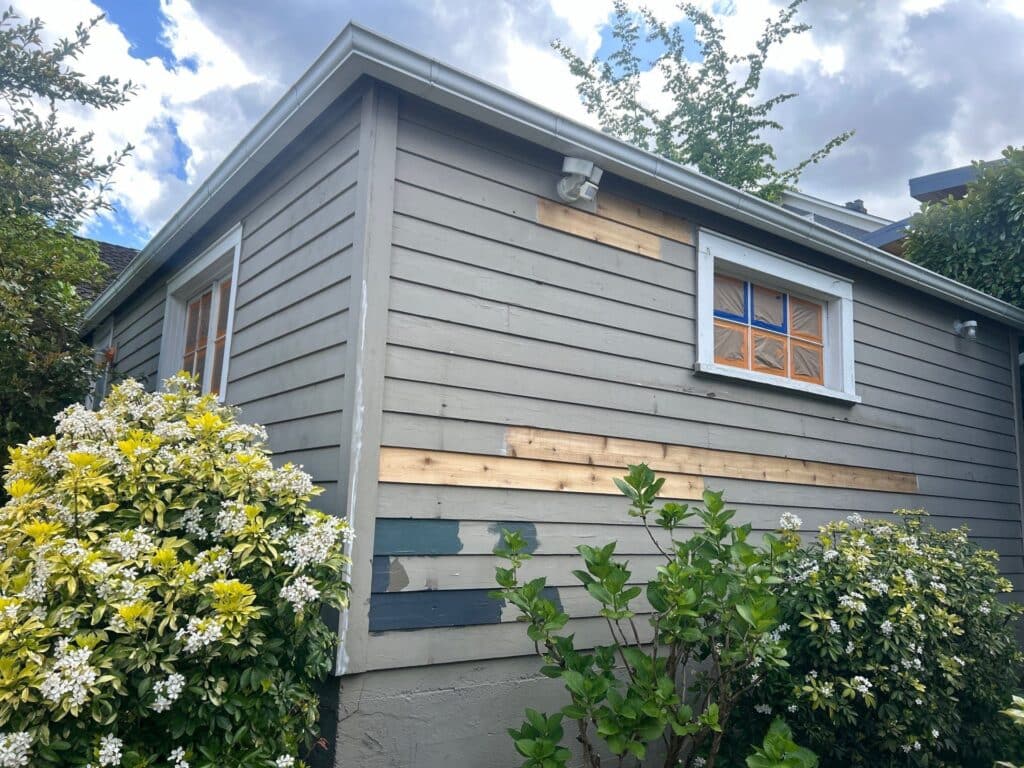
Repairing Wood Rot
The repair process typically involves removing the decayed wood and replacing it with new material. This may entail:
- Removing Damaged Wood – Use a chisel, scraper, or saw to carefully remove the rotted wood, ensuring that you reach solid, unaffected material. Take care to avoid damaging surrounding areas.
- Treating with Wood Hardeners – In some cases, it may be necessary to treat the remaining wood with a wood hardener to strengthen it and prevent further decay.
- Replacing with Rot-Resistant Material – Replace the removed wood with rot-resistant material, such as cedar or pressure-treated lumber, to prevent future issues. Ensure proper fitting and secure installation to maintain structural integrity.
- Sealing and Painting – Once the repair is complete, seal the newly installed wood with a high-quality primer and paint or stain to provide an additional layer of protection against moisture. It’s important to stay on top of your seal or paint, as this is the first barrier to the rain.
Repairing wood rot is a crucial aspect of maintaining the structural integrity and aesthetic appeal of your home. This is especially important in a climate like Seattle’s where moisture-related issues are prevalent. While prevention is ideal, sometimes wood rot can still occur despite our best efforts. Fortunately, with the right approach and expertise, it’s a fairly easy fix.
Our Approach
At our company, we understand the importance of timely and effective wood rot repairs. Our carpenters are experienced in identifying and addressing wood rot issues. Whether it’s replacing rotted siding, repairing damaged trim, or restoring a deteriorating deck, our team is equipped to handle a wide range of repair projects.
Our carpentry services are not limited by season the way that our painting services are. Our carpenters work throughout the winter to remove rotting siding and replace it with fresh wood. This allows us to take care of repairs year round in order to have time for the exterior painting summer months. We’re unable to complete exterior painting projects due to the rain and cold temperatures, so our time is better spent making repairs.
In conclusion, while preventing wood rot is ideal, knowing how to effectively repair it is equally important for maintaining your home’s value. With the assistance of professionals and a proactive approach to maintenance and repair, you can keep your wooden structures looking beautiful and resilient against Seattle’s challenging weather conditions. Trust in our expertise and commitment to excellence, and let us help you safeguard your home for years to come.
Get in Touch
If you have a project in Seattle that requires a professionals attention, reach out to us today! Our experienced carpenters and painters are ready to tackle your projects. Contact us here today.
